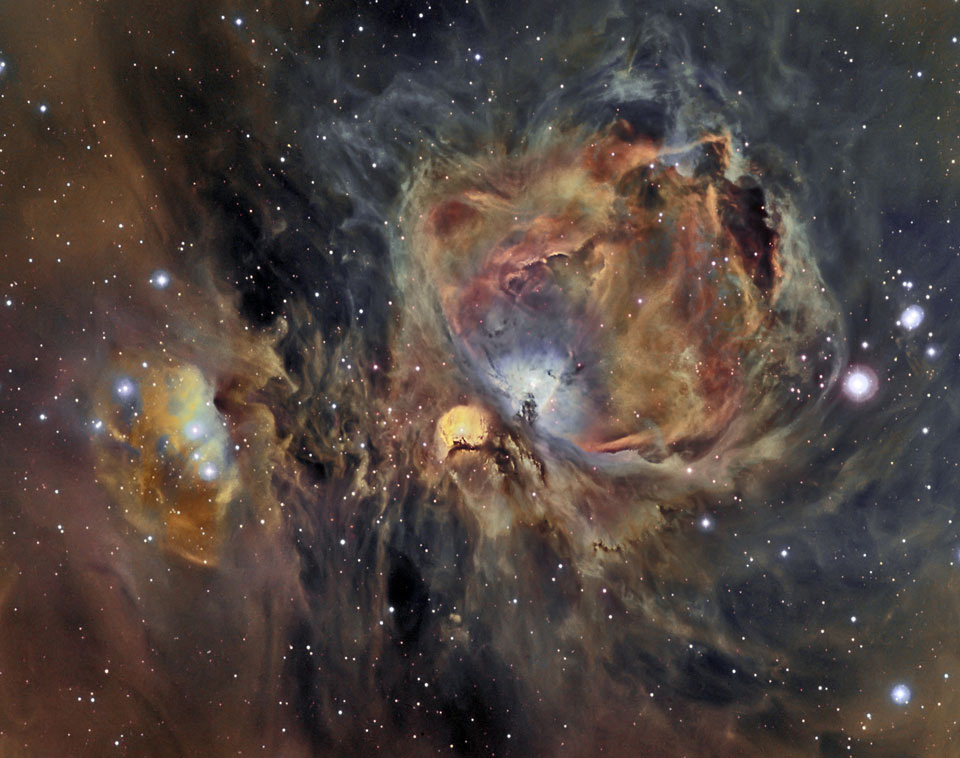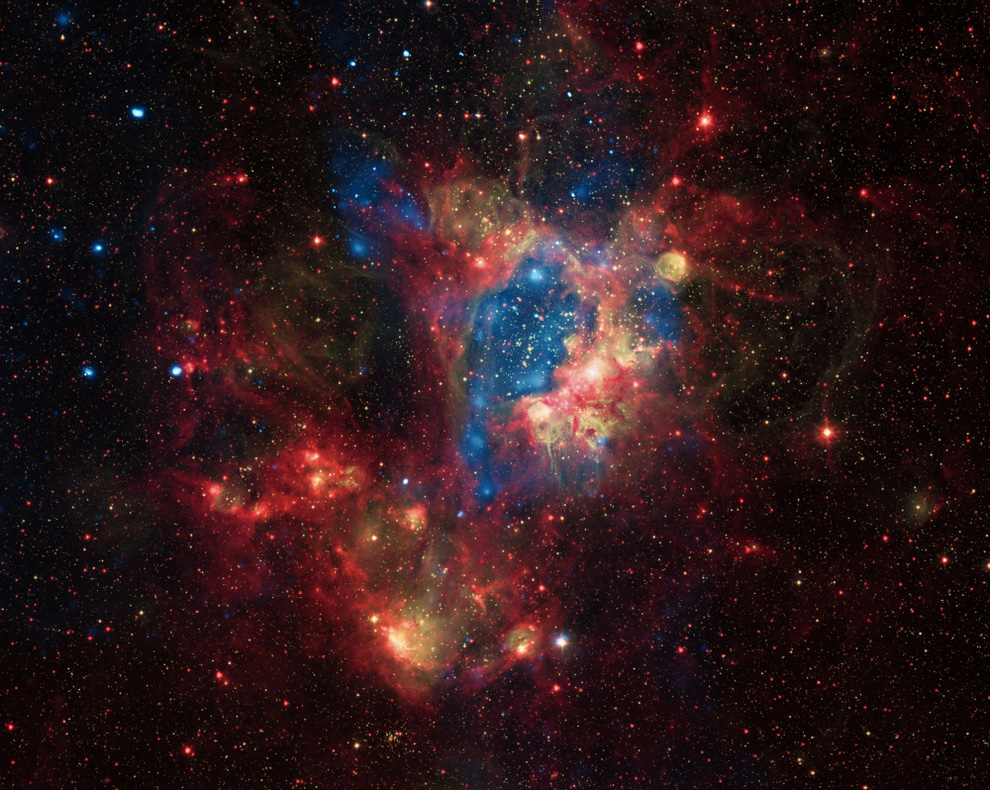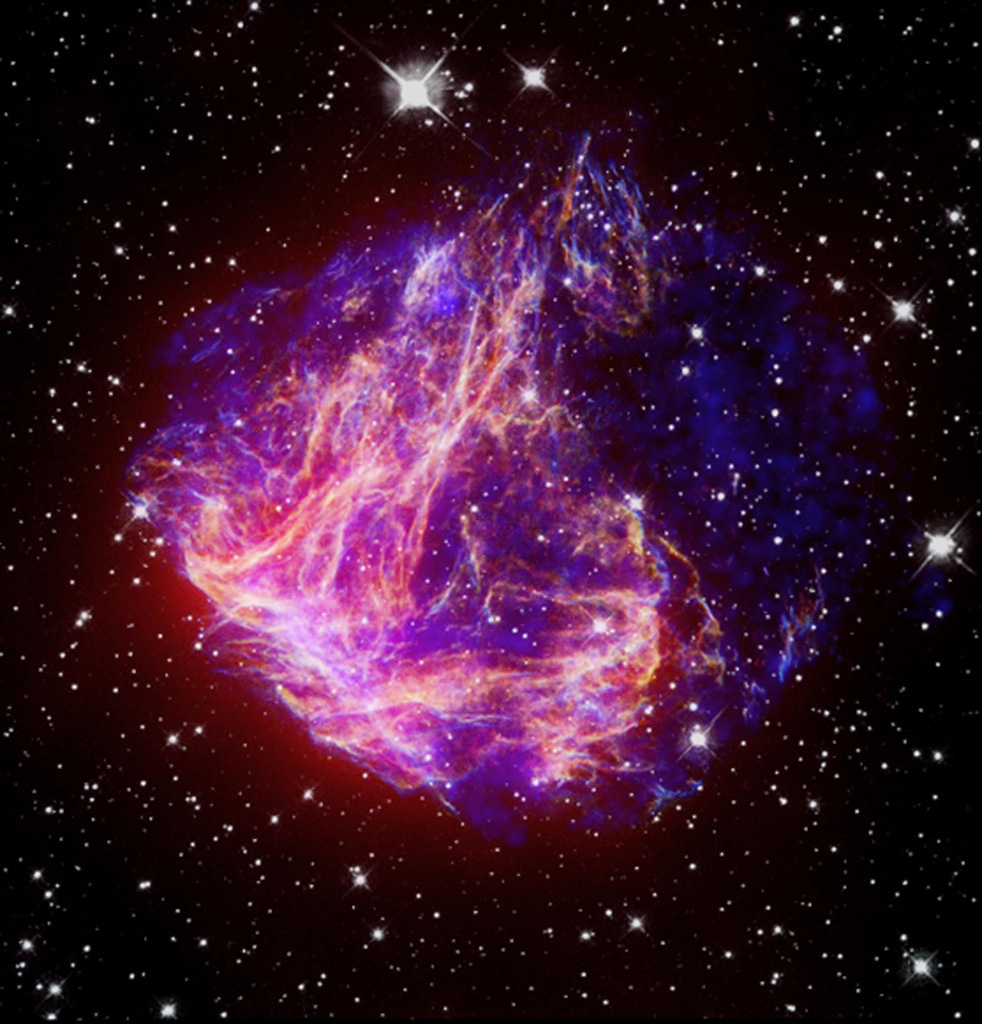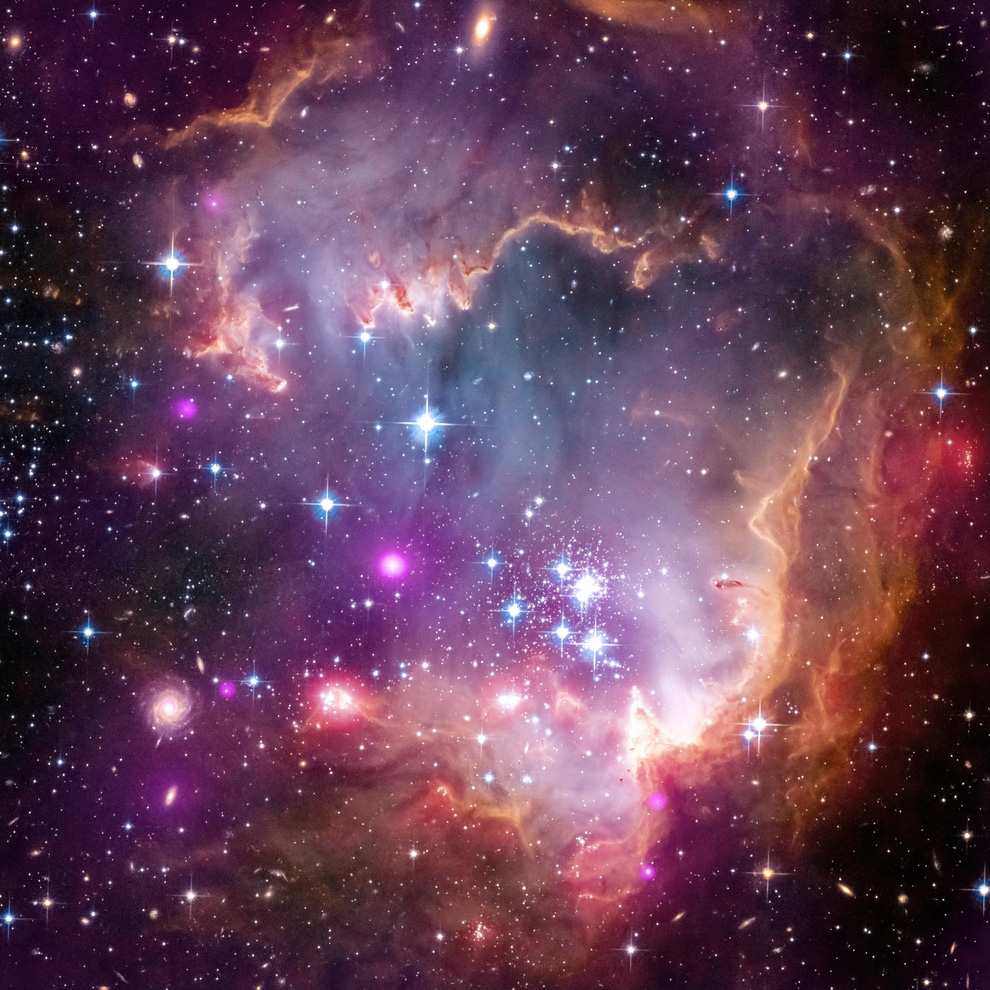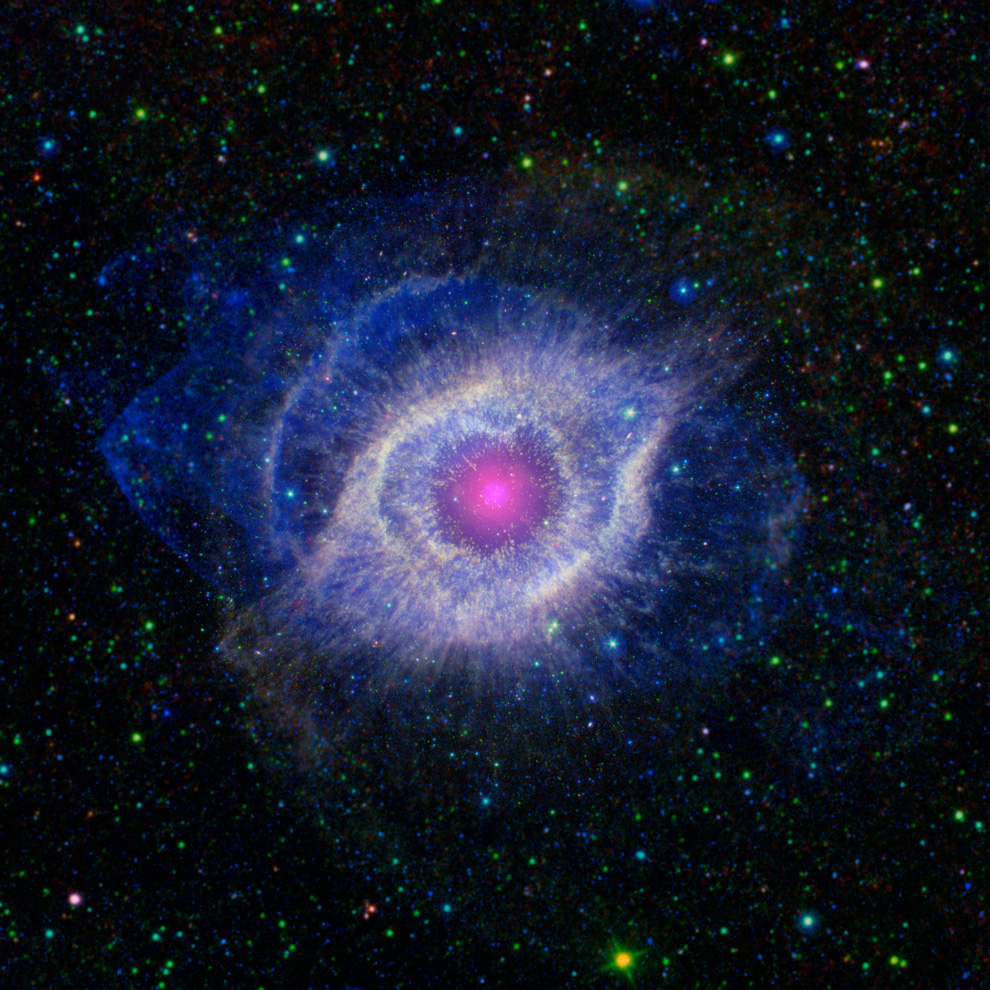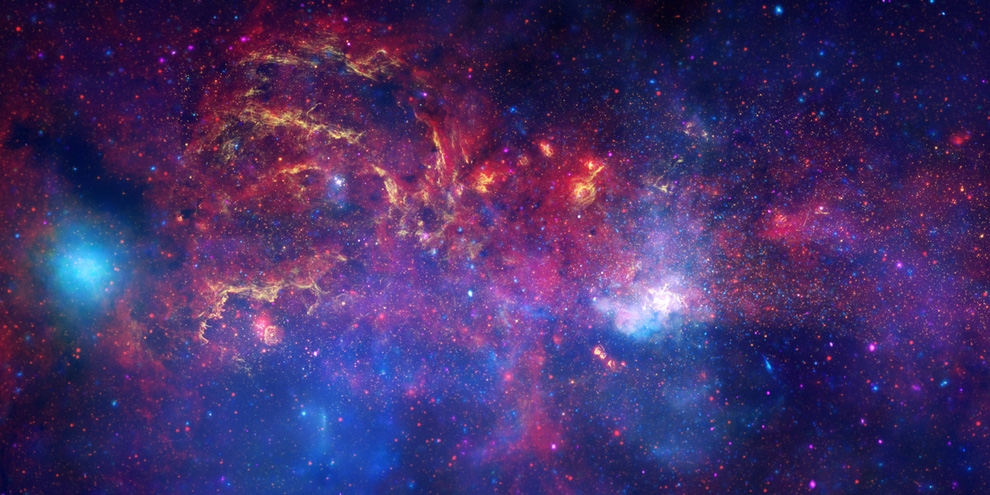6 Highly Activating Satellite Photos That Capture the Magnificence of the Universe
From Buzzfeed
—
(Click images for larger versions)
The Orion Nebula
The Orion Nebula spans about 40 light years and is located about 1500 light years away in the same spiral arm of our Galaxy as the Sun.
A bright superbubble
This composite image shows a superbubble in the Large Magellanic Cloud (LMC), a small satellite galaxy of the Milky Way, located about 160,000 light years from Earth. Massive stars in the cluster produce intense radiation, expel matter at high speeds, and explode relatively quickly as supernovas. Winds from the massive stars and shocks from the supernovas carve out “superbubbles” in the gas seen in X-rays by Chandra (blue).
Source: NASA / via: chandra.harvard.edu
—
Stellar debris in the Large Magnetic Cloud
This is a composite image of N49, the brightest supernova remnant in optical light in the Large Magellanic Cloud. The Chandra X-ray image (blue) shows million-degree gas in the center. Much cooler gas at the outer parts of the remnant is seen in the infrared image from Spitzer (red).
Source: NASA / via: photojournal.jpl.nasa.gov
—
A “small” galaxy which orbits our own galaxy
The SMC is one of the Milky Way’s closest galactic neighbors. Even though it is a small, or so-called dwarf galaxy, the SMC is so bright that it is visible to the unaided eye from the Southern Hemisphere and near the equator. Many navigators, including Ferdinand Magellan who lends his name to the SMC, used it to help find their way across the oceans.
A dying star
In death, the star’s dusty outer layers are unraveling into space, glowing from the intense ultraviolet radiation being pumped out by the hot stellar core. Planetary nebulae (like the Helix Nebula above) are actually the remains of stars that once looked a lot like our sun. These stars spend most of their lives turning hydrogen into helium in massive runaway nuclear fusion reactions in their cores.
—
The center of the Milky Way galaxy
A view of the turbulent heart of our Milky Way galaxy.About 26,000 light years from Earth.The entire image width covers about one-half a degree, about the same angular width as the full moon.


